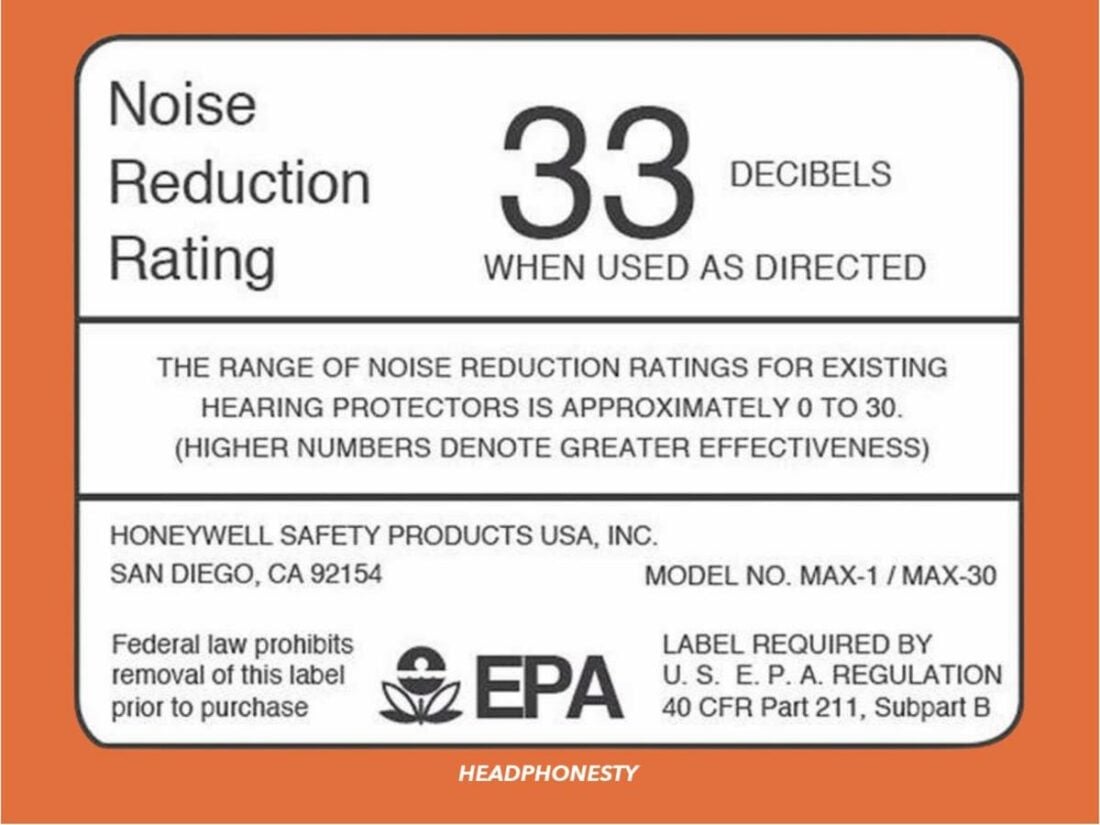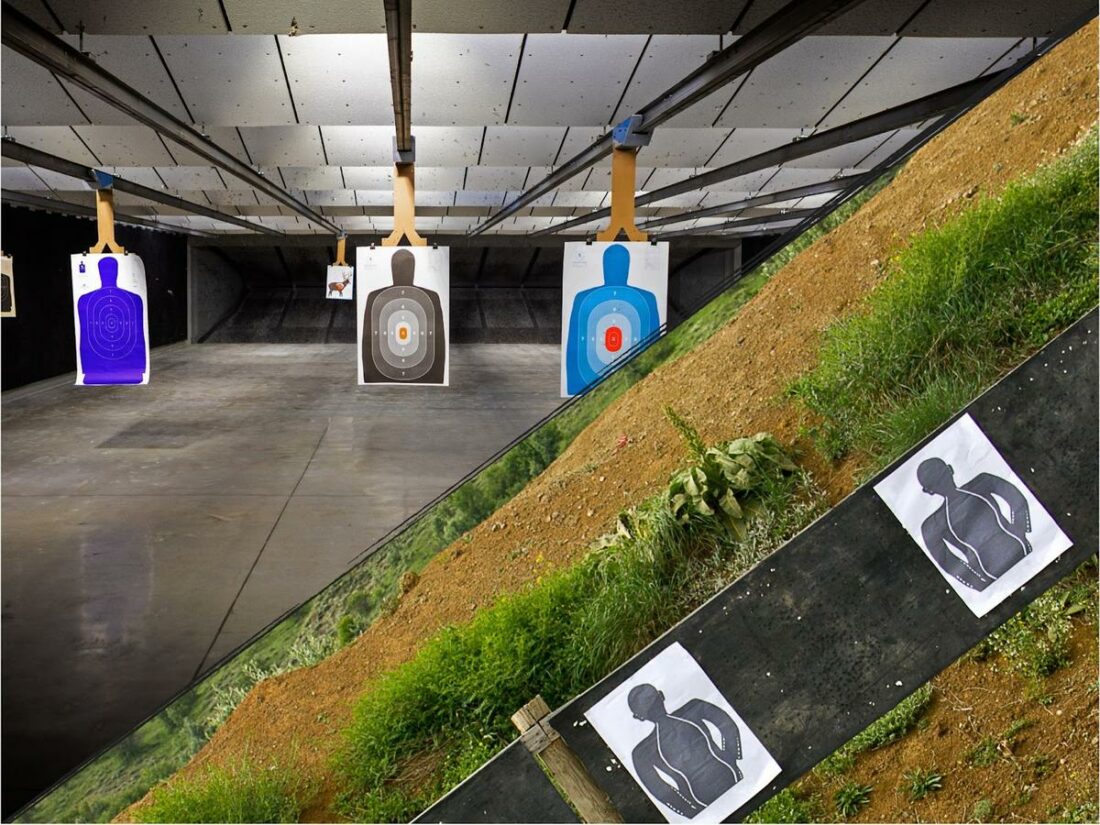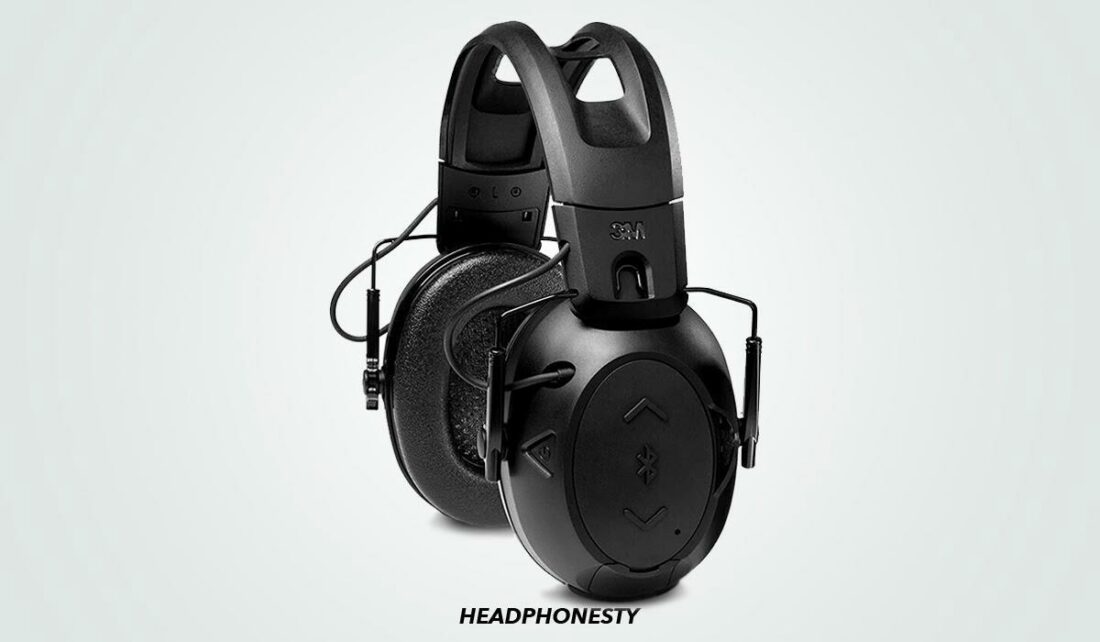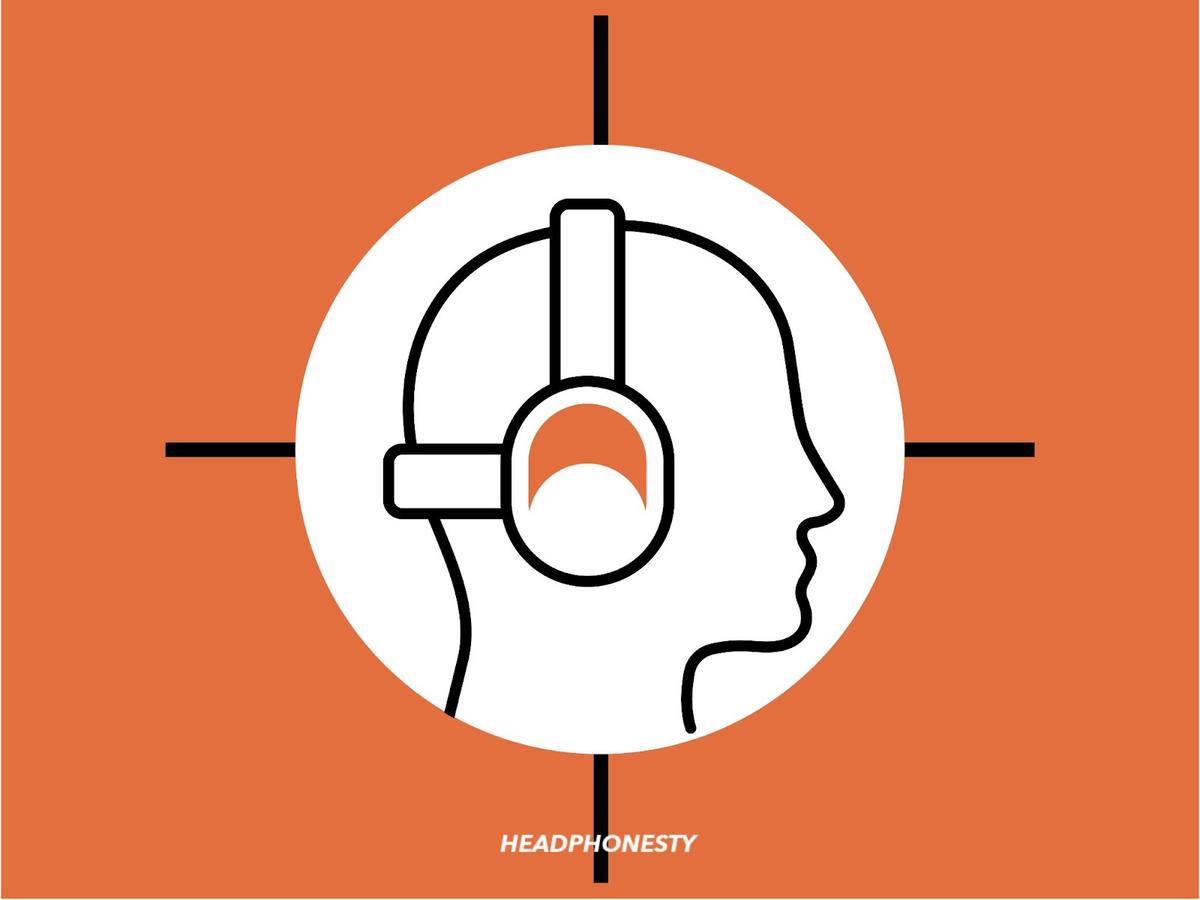A comprehensive guide to decoding noise reduction ratings for a safer shooting experience
Hearing protection devices are essential to prevent loud gunshots from causing irreparable damage to your ears when shooting.
However, it’s not always clear how much noise reduction you need to keep you safe while shooting. Many factors can affect the level of protection you need, and the rating on the box doesn’t always match up to reality.
Fortunately, depending on the gun type, length of exposure, and type of shooting range, figuring out the level of noise reduction you need can be quite simple. So keep reading as this article discusses all about these factors and more!
How Much NRR Do You Need When Shooting?
You should always aim for as much noise reduction as possible when shooting, which is 33 dB for earplugs, 31 dB for earmuffs, and 36 dB when wearing both at once.
However, the minimum amount of Noise Reduction Rating (NRR) you’ll need to reduce the gunshots to a safe volume is mostly dependent on two main factors: the gunshot volume and exposure time.
To prevent instant damage from a gunshot, you’ll need to reduce the sound to less than 120 dB.
Additionally, you need to consider how long you’ll be exposed to dangerous levels of sound. This is because the risk of hearing damage increases the longer you’re exposed to dangerous levels of sound.
For example, 100 dB of sound won’t cause damage instantly but can put you at risk after just fifteen minutes.
If you’re shooting for a few hours, you should aim to reduce the volume to below 85 dB. This is the legally required OSHA standard to keep workers safe in high-volume environments, so it’s a good rule to follow.
You can measure the noise reduction a hearing protection device (HPD) offers with the noise reduction rating.
What exactly is a noise reduction rating (NRR)?

The NRR of a hearing protection device refers to the decibels it can reduce an incoming sound by. For example, earplugs with an NRR of 30 would reduce a 140 dB gunshot to only 110 dB upon reaching your ears.
However, the advertised NRR of a device isn’t always accurate for real-world applications. The testing to determine a device’s NRR is done in a controlled environment and doesn’t consider issues like fit and interference.
Because of these inaccuracies, you’ll need to adjust the NRR to a more realistic score. This is known as derating a device. OSHA does this by halving the advertised NRR of every hearing protection device, though there are methods more specific to the form factor of an HPD available.
However, the NRR of a hearing protection device isn’t the only factor you should consider.
Different Factors That Affect the Required NRR for Shooting
There are several additional factors that can affect the amount of NRR you need when shooting. Let’s go through each of them:
Type of firearm
Different firearms produce different amounts of noise when fired. This is due to factors such as caliber, barrel length, and muzzle velocity.
Here are some of the most popular firearms and how loud they are when unsuppressed:
| Firearm | Average Sound Levels ( dB) |
|---|---|
| Vostok CM-2 | 120-122 |
| Margolin | 138-139 |
| FEG FP9 | 143-144 |
| TT model 33 | 144 |
| Emperor | 144 |
| AKMS | 144 |
| Mauser 1942 Model 24 | 144-145 |
| Galil SAR | 144-145 |
| Savage Mark II | 145-153 |
| SIG P226 22LR Conversion | 155-161 |
| H&K MP5 9mm | 160-163 |
| Kriss Vector Gen2 SBR 45ACP | 165-167 |
| Glock 19 Gen3 9mm | 165-167 |
| Kimber Classic Target LE 45ACP | 165-167 |
| M16A1 Clone AR15 | 166-170 |
| High Standard AR15 | 167-171 |
| Savage Model 10 | 171-172 |
| Ruger AM. Predator | 170-173 |
If your firearm isn’t on this list, you can use the gunfire noise level reference chart developed by Dr. Krammer from the Ball State University of Indiana to figure out what volume your gun likely fires at.
However, without accurately testing your specific firearm, you should always aim for more hearing protection than indicated on this chart to avoid any unexpected volumes that might cause you damage.
Indoor vs. outdoor shooting

Another factor to consider is whether you’re shooting indoors or outdoors, as this changes how noise behaves.
Because of this, more percussive waves impact your ears with each gunshot, causing more damage to your hearing.
There’s no set amount of extra noise protection you’ll need when shooting indoors, as each indoor gun range is set up differently.
Many use sound-proofing materials to dampen the noise reflected back at you, but the effectiveness of this depends on the material and placement.
You should talk to your range instructor or the range owner about the sound-dampening measures they have in place and adjust your hearing protection accordingly.
Frequency of shooting
As explained above, the length of time you’re exposed to dangerous sound levels affects your level of risk. This means that the more frequently you go shooting, the more the length of time you’ve been exposed adds up.
To understand why, it’s important to look at how loud noises can damage hearing.
Inside your ears are thousands of tiny hairs that allow your brain to detect sound. Extreme levels of noise can damage these hair cells, causing them to die. This can happen after just one exposure to dangerous sound levels.
But prolonged exposure to high levels of sound can also cause damage. This is because the hair cells get overworked, which also causes them to die. You can lose 30% to 50% of these hair cells before the hearing loss can be detected.
Unfortunately, damage to these hair cells cannot be repaired, causing permanent hearing loss.
If you shoot frequently or for long durations, even small amounts of damage taken each session can add up to a serious risk of hearing loss.
This makes a higher NRR a good idea if you’re shooting regularly. If you’re shooting every weekend for several hours, you should aim for as much NRR as possible, regardless of other factors such as gun type or shooting range.
Personal hearing sensitivity
Everyone has a different level of sensitivity to loud noises, meaning that some people can tolerate higher sound levels than others. If you’re hypersensitive to loud or irritating noises, a higher NRR will let you enjoy your shooting more.
If your hearing sensitivity is high and your NRR is inadequate, you also risk auditory overload. This happens when the sound level gets too intense for your brain to process. It can make you feel uncomfortable and overwhelmed, which will impact your enjoyment of the shooting experience.
How to Get the Best Noise Reduction When Shooting
If you’ve determined that you will need a lot of noise reduction, you might be wondering how to make the most of the available options. There isn’t always a hearing protection device with a high enough NRR on the market, and some people might be unable to afford a new, higher-quality HPD.
Fortunately, there are ways to maximize the protection you can get from a hearing protection device:
Dual noise reduction
Dual noise reduction, or doubling up, is when you wear both earplugs and earmuffs simultaneously. This allows you to enhance the maximum level of protection beyond what you would get from using just earplugs or earmuffs alone.
However, the protection offered isn’t as much as you might first think. You can’t simply add the NRRs of the two devices together for a higher total. To compute the new NRR of the combined devices, you should add five to the NRR of the highest-rated device.
While it may not seem like five dB is much of a benefit, it’s worth remembering that decibels are a logarithmic scale of measurement.
This means that the perceived loudness of a sound doubles for every ten dB you go up the scale. Five dB is a clearly noticeable reduction in the volume of the sound.
High-quality HPDs

If you want to purchase a new hearing protection device, investing in a top-of-the-range device is a good idea. Here are some samples of the best hearing protection for shooting:
- Best passive earplugs: The Surefire EP10 Sonic Defenders, with an NRR of 30 dB.
- Best passive earmuffs: The ProCase Ear Defenders, with an NRR of 28 dB.
- Best active earplugs: The OTTO Engineering NoizeBarrier Micro, with an NRR of 40 dB.
- Best active earmuffs: The Peltor Sport Tactical 500s, with an NRR of 26 dB.
For a comprehensive review of these hearing protection devices and six more options, you can check out our top ten hearing protection devices for shooting.
Other factors affecting noise reduction
The NRR score reflects the maximum noise reduction a device can provide in an ideal situation. However, three other factors can affect how much noise reduction you’ll actually get from an HPD:
- Fit: Getting a good fit is essential to getting the most out of an HPD. Improperly fitted devices won’t block as much sound as possible due to leaving gaps around your ear that allow sound in.
- Comfort: You’ll likely wear your hearing protection for several hours at a time, so an uncomfortable HPD will cause persistent pain and discomfort. This can lead to removing the device at inappropriate times, potentially exposing you to dangerous sound levels.
- Compatibility with other equipment: Your HPD must be compatible with other safety equipment to ensure you get the maximum possible protection. If your Personal Protective Equipment (PPE), such as safety glasses, interferes with the seal of your hearing protection, you won’t get the full effect of the device.
Considering these factors when purchasing or wearing an HPD will result in a higher level of noise reduction.
Conclusion
Now you know how much noise reduction you’ll need while shooting and the factors you need to consider when choosing a hearing protection device. Hopefully, you’ll be able to shoot properly protected and without concern about your hearing!
What volume does your gun shoot at, and how much NRR do you need? Did you do any decibel tests yourself? You can tell us in the comments below to help other readers with their calculations!
